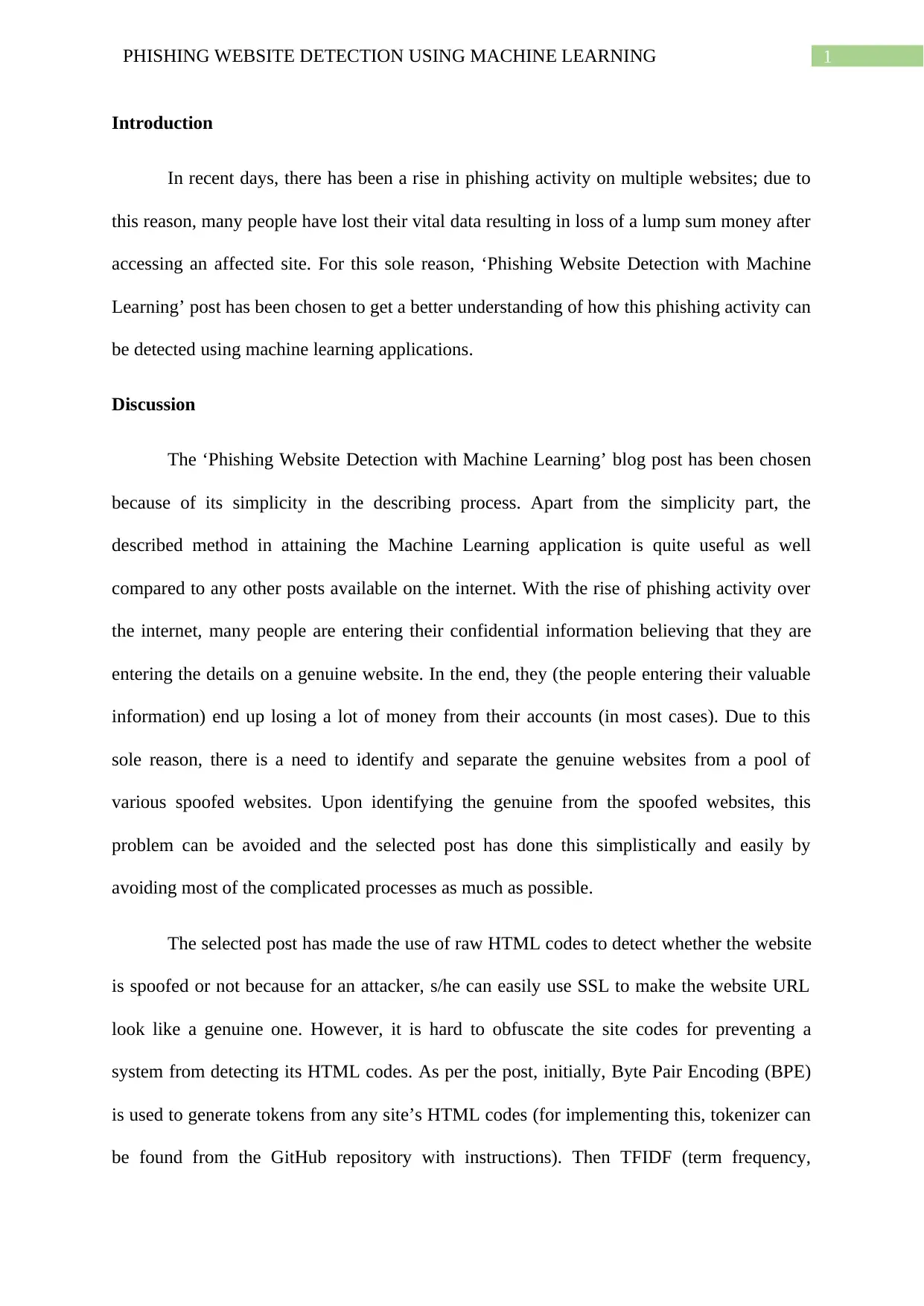Report on Phishing Website Detection using Machine Learning Techniques
VerifiedAdded on 2022/08/24
|4
|622
|27
Report
AI Summary
This report analyzes a machine learning approach to phishing website detection. The report discusses the use of Byte Pair Encoding (BPE) to generate tokens from HTML code, followed by TF-IDF weighting. It then explains the use of a Random Forest classifier to generate phishing website detection results. The report highlights the creation of a confusion matrix (containing true positive and false positive rates) and the effect of confidence threshold on test accuracy to determine whether a website is legitimate or a phishing site. The report acknowledges the effectiveness of the described process but also notes potential limitations, such as the large number of phishing websites and the possibility of attackers bypassing the system by altering the HTML codes.
1 out of 4






![[object Object]](/_next/static/media/star-bottom.7253800d.svg)